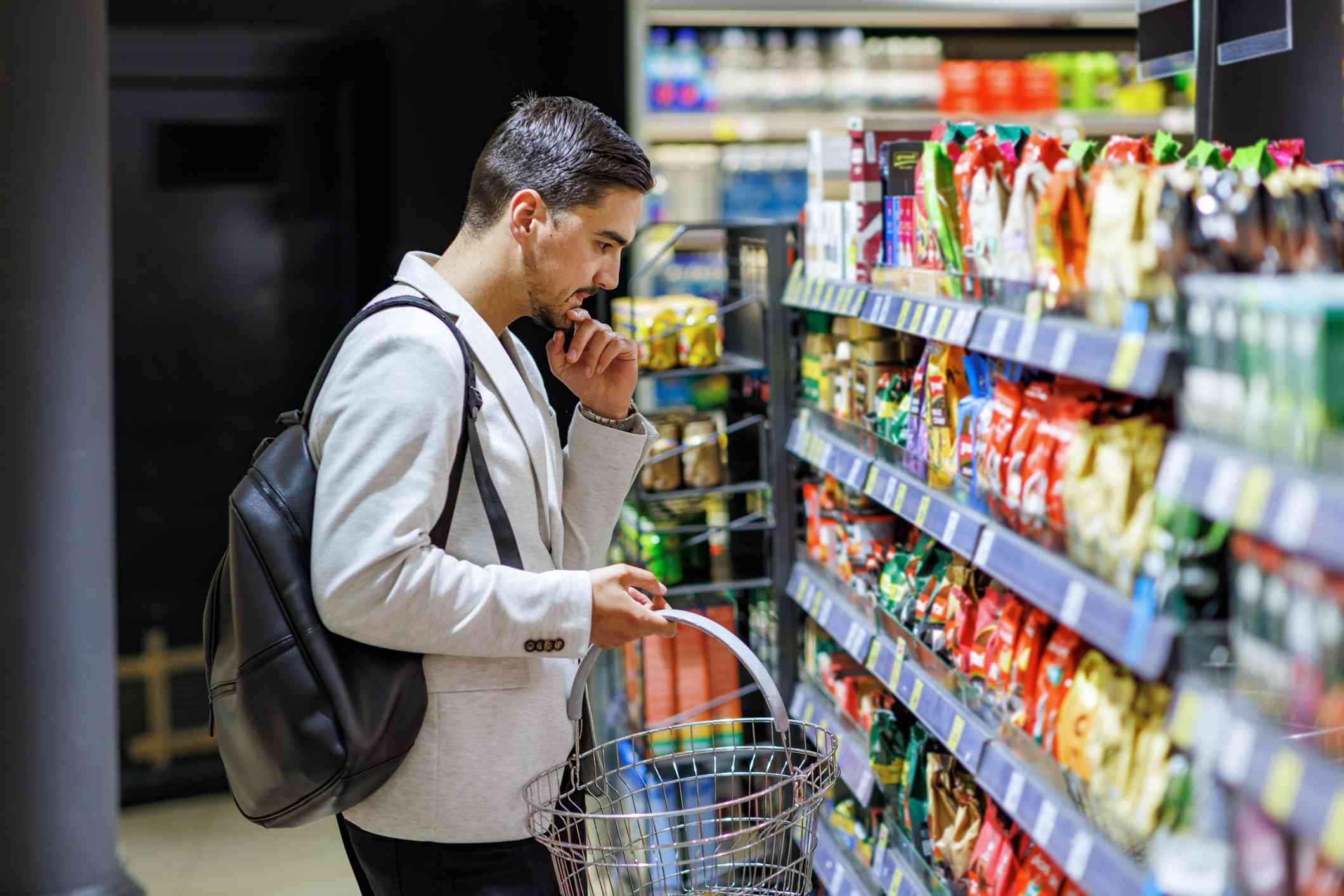Here's How to Tell if Your Favorite Snack Is Actually an Ultra-Processed Food

Ultra-processed can be defined using additives to make a food product sellable and palatable. Some ultra-processed foods, while containing additives, do contain valuable nutrients that can fit into a well-balanced diet
- Ultra-processed can be defined using additives to make a food product sellable and palatable.
- Some ultra-processed foods, while containing additives, do contain valuable nutrients that can fit into a well-balanced diet.
- Experts recommend not relying on ultra-processed foods for the bulk of your diet if possible.
Are you worried about the quality of your snack choices?
Research has found that Americans tend to lean on ultra-processed foods. And while these quick, easy-to-grab options may be ideal for hectic lifestyles, they can be linked to health consequences.
A diet rich in ultra-processed foods has been associated with an increased risk of metabolic syndrome, type 2 diabetes, and certain cancers.
The United Nations Food and Agriculture Organization (FAO) defines “ultra-processed” as formulations of ingredients, mostly of exclusive industrial use, typically created by a series of industrial techniques and processes.
Ultra-processed foods generally use additives to make the product sellable, palatable, and often hyper-palatable.
“Ultra-processed foods are those that have undergone numerous processes (such as refining, heating, hydrogenation, etc.) and contain a host of added ingredients, such as preservatives, sweeteners, and thickeners,” Sarah Garone, NDTR, CNC, a registered nutrition and dietetics technician told Health.
Some examples of ultra-processed foods include packaged cookies, frozen entrees, protein bars, and flavored chips.
“Most of the foods we eat every day are processed to some degree, but ultra-processed foods take things a step further,” Garone said.
Here’s how ultra-processed foods can impact the body, as well as how they can fit into a well-balanced diet.

Getty Images / RealPeopleGroup
Navigating Ultra-Processed Food Choices
The FAO suggests that a good first step in identifying whether a food is ultra-processed is if the ingredients listed contain items not typically used in kitchen cooking, like maltodextrin and artificial sweeteners.
Other ingredients found in ultra-processed foods can include “ingredients extracted from other foods, like casein, lactose, gluten, whey, hydrogenated oils, protein isolate, maltodextrin, inverted sugar, and high-fructose corn syrup,” explained Lisa Andrews, MEd, RD, LD, registered dietitian and owner of Sound Bites Nutrition.
She added that these additions could even be nutritious elements like fiber, vitamins, or minerals.
The FAO shared an exercise that highlights how to differentiate between processed and ultra-processed foods.
For instance: Processed bread will have an ingredient list consisting of minimal ingredients that are found in a home kitchen: wheat flour, water, salt, and yeast. Breads considered ultra-processed will be made with additional ingredients, including emulsifiers or added colors.
“Many ultra-processed foods look nothing like their original ingredients such as pastries, cookies, soda, candy, and frozen meals,” Lauren Harris-Pincus, MS, RDN, a registered dietitian, the founder of Nutrition Starring YOU and the author of The Everything Easy Pre-Diabetes Cookbook, told Health.
“They typically have long ingredient lists and contain additives, preservatives, and ingredients you would not find in a home kitchen,” she explained.
Unfortunately, food manufacturers are not required to state on the food label the processes used when making their products, making it hard for consumers to navigate whether their food choice is ultra-processed or not.
And, while many ultra-processed foods have a long ingredient list, that doesn’t automatically mean the food is unhealthy.
Harris-Pincus explained that fortified foods can contain several vitamins and minerals that sound like chemicals but are important to public health, such as folic acid to help prevent neural tube defects in pregnancy.
In general, staying aware of how many ultra-processed foods you’re eating is a good idea, Andrews said, emphasizing that people may want to “limit fried snacks (chips) or highly processed cakes, cookies and other pastries with added sugar, fats, and sodium.”
How to Find Balance With Ultra-Processed Foods
Eating more ultra-processed foods is indeed associated with certain health risks. And if you are motivated to avoid any ultra-processed food you encounter, you can do this by evaluating the food labels on your packaged food choices.
In doing this, it’s important to note that not all ultra-processed foods are created equal.
“Some ultra-processed foods are also nutrient-dense, meaning they are a source of vitamins, minerals, and other health-promoting components with limited added sugar, sodium, and saturated fat,” Harris-Pincus said.
She explained that foods like whole grain cereals and fortified soymilk provide much-needed nutrients in accessible, affordable—and yes, ultra-processed—forms.
Data supports the notion that ultra-processed foods can support a person’s health, depending on the choices made.
USDA scientists showed that it is entirely possible to follow the recommendations of the 2020–2025 Dietary Guidelines for Americans while consuming 91% of all calories from ultra-processed foods. The researchers chose options that were lower in saturated fat and added sugar, and the choices contained micronutrients.
Some of the ultra-processed foods used in this menu included instant oatmeal, ultra-filtered milk, whole wheat bread, and dried fruit.
By following this dietary pattern, researchers noted people could meet all “healthy eating” guidelines, except for exceeding the recommended sodium intake and not meeting the recommended whole grain intake.
This data highlights that, while eating a diet mostly made of ultra-processed foods is not recommended, it is possible to make choices under the ultra-processed umbrella that can support your health.
Garone emphasized that there’s no perfect ratio of how much ultra-processed food should be in your diet, as everyone has different needs based on accessibility and affordability.
“It won’t break your health if you eat an ultra-processed granola bar or ice cream sandwich here or there,” she said. “The main thing is to identify ultra-processed foods and not rely on them for the bulk of your diet.”
Ultra-Processed Foods Linked to Higher Cardiovascular Risk for People With Type 2 DiabetesThis story originally appeared on: Health News - Author:Lauren Manaker MS, RDN, LD

















